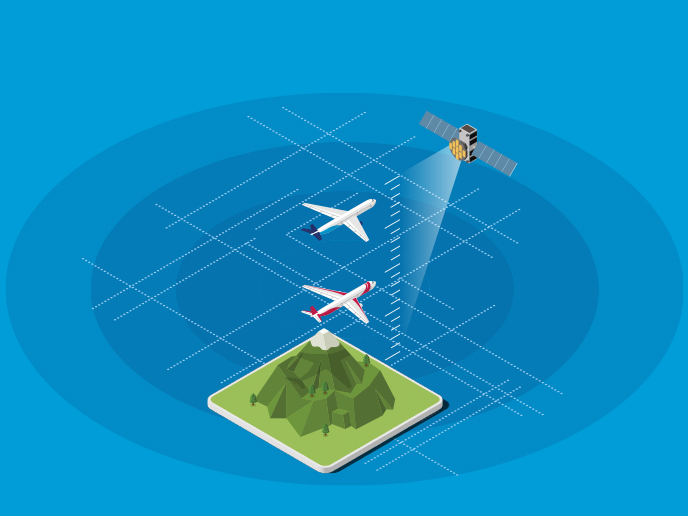II - Aircraft efficiency starts with having the right altitude
“Knowing an aircraft’s precise altitude could help pilots and air traffic controllers plan more efficient approaches, descents and climbs.”
Tobias Bauer, Green-GEAR project coordinator
Aviation is a significant source of greenhouse gases, responsible for 2.5 % of global energy-related CO2 emissions. Greener aircraft and sustainable fuel sources will take time to deploy. “Solutions such as sustainable aviation fuels and hydrogen or battery-powered electric aircraft are in the early stages of development, and their full roll-out will take decades,” says Tobias Bauer, a researcher with the German Aerospace Center (DLR). In light of this reality, Bauer says, the best way forward is to help existing aircraft types avoid generating unnecessary CO2 and to minimise aviation’s non-CO2-related climate impact. With the support of the Green-GEAR project, funded through the SESAR JU, Bauer is leading an effort to do both. “By increasing the efficiency of the existing aircraft fleet, we hope to already help decrease aviation’s climate impact in the short to medium term,” he explains.
Mapping a route to sustainability
For the Green-GEAR project, making an aircraft more efficient starts with altitude. Researchers are investigating the impact on airspace capacity, safety and the environment offered by shifting from traditional barometric altimetry to more precise geometric position-finding, supported by satellite data. “Knowing an aircraft’s precise altitude could help pilots and air traffic controllers plan more efficient approaches, descents and climbs – all of which would reduce emissions, not to mention noise, in the airport vicinity,” adds Bauer. The new technology could also allow for a smaller vertical separation requirement between aircraft travelling within the same airspace. “This would enable more aircraft to fly at their preferred altitude, an achievement that would not only increase capacity but have the added environmental bonus of reducing fuel burn,” notes Bauer. Researchers also hope to explore whether airspace user charges could be used to incentivise eco-friendly behaviour. “There could be an opportunity here to prevent detours flown just for the sake of saving charges and to reward such sustainable behaviour as avoiding congested airspace or climate hotspots,” remarks Bauer. The Green-GEAR project’s work will be exploratory in nature, meaning researchers will not yet deliver ready-to-use solutions, but instead demonstrate ideas. “We are starting from scratch, so our main outcomes will be operational concepts validated in workshops, computational studies and fast-time simulations, each of which will compare our ideas to the status quo in terms of operational feasibility as well as their impact on the environment and safety,” concludes Bauer.
Keywords
aviation, SESAR JU, sustainability, carbon neutrality, air traffic management, ATM, Green Deal, environmental impact, Horizon Europe, Digital European Sky, emissions, reduction



